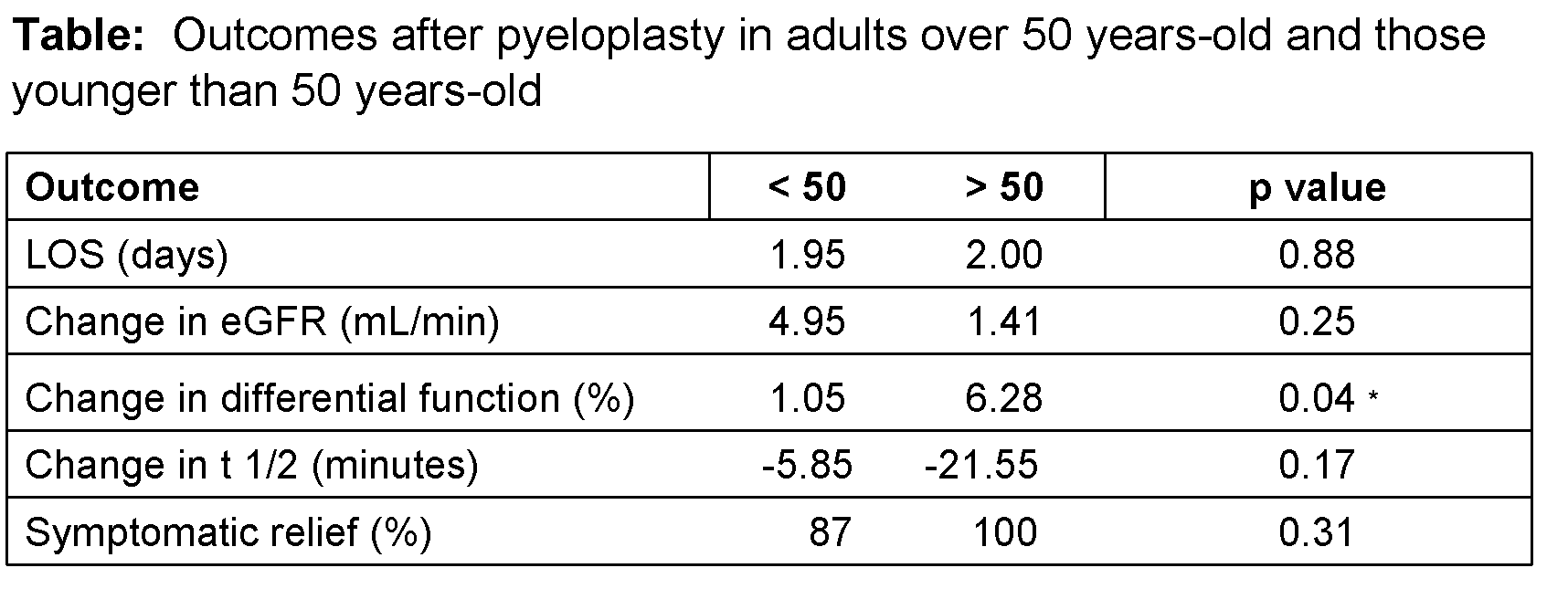|
Back to 2011 Program
Robotic Pyeloplasty in Adults over 50 years-old: Outcomes Compared to a Younger Cohort
F. Cameron Hill, Jules P. Manger, Noah S. Schenkman
University of Virginia, Charlottesville, VA
Introduction:
Ureteropelvic junction (UPJ) obstruction frequently presents in the pediatric population. With improved life expectancy and increased use of imaging, more patients are presenting with UPJ obstruction after age fifty. We hypothesized that Objective measures of surgical outcomes of pyeloplasty would be equivalent in our adult populations older than and younger than 50 years-old.
Methods:
An IRB-approved retrospective database of surgical management of UPJ obstruction by a single surgeon between November 2006 and October 2010 was created. Of 69 patients, 22 patients (32%) were older than 50 years of age. Diuretic renography and creatinine were obtained pre- and post-operatively and patients were followed for two years postoperatively. Univariate analysis was performed with standard statistics.
Results:
The two groups were equivalent with regards to age, gender, laterality, and etiology. Postoperatively, patients greater than 50 years-old were found to have a greater increase in ipsilateral differential function on renography than the younger cohort (6.28% vs. 1.05%, p=0.04). There was no difference between the two groups with regards to other postoperative outcomes.

Conclusions:
This is, to our knowledge, the first study to address the surgically relevant outcomes of robotic pyeloplasty in an older cohort. We demonstrated that in those greater than 50 years-old, there is a greater improvement in differential function on renography and equivalence of other outcomes, compared to a younger cohort.
Back to 2011 Program
|